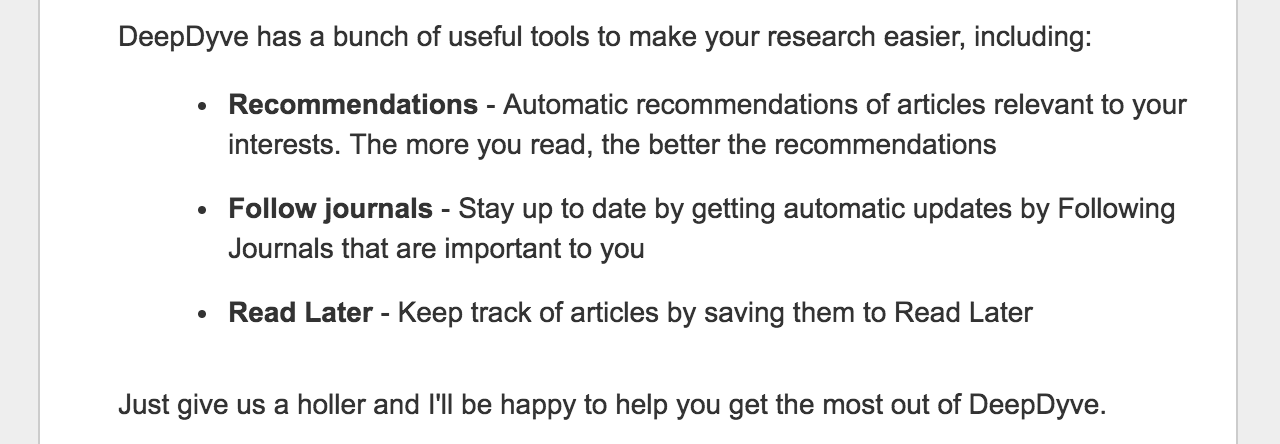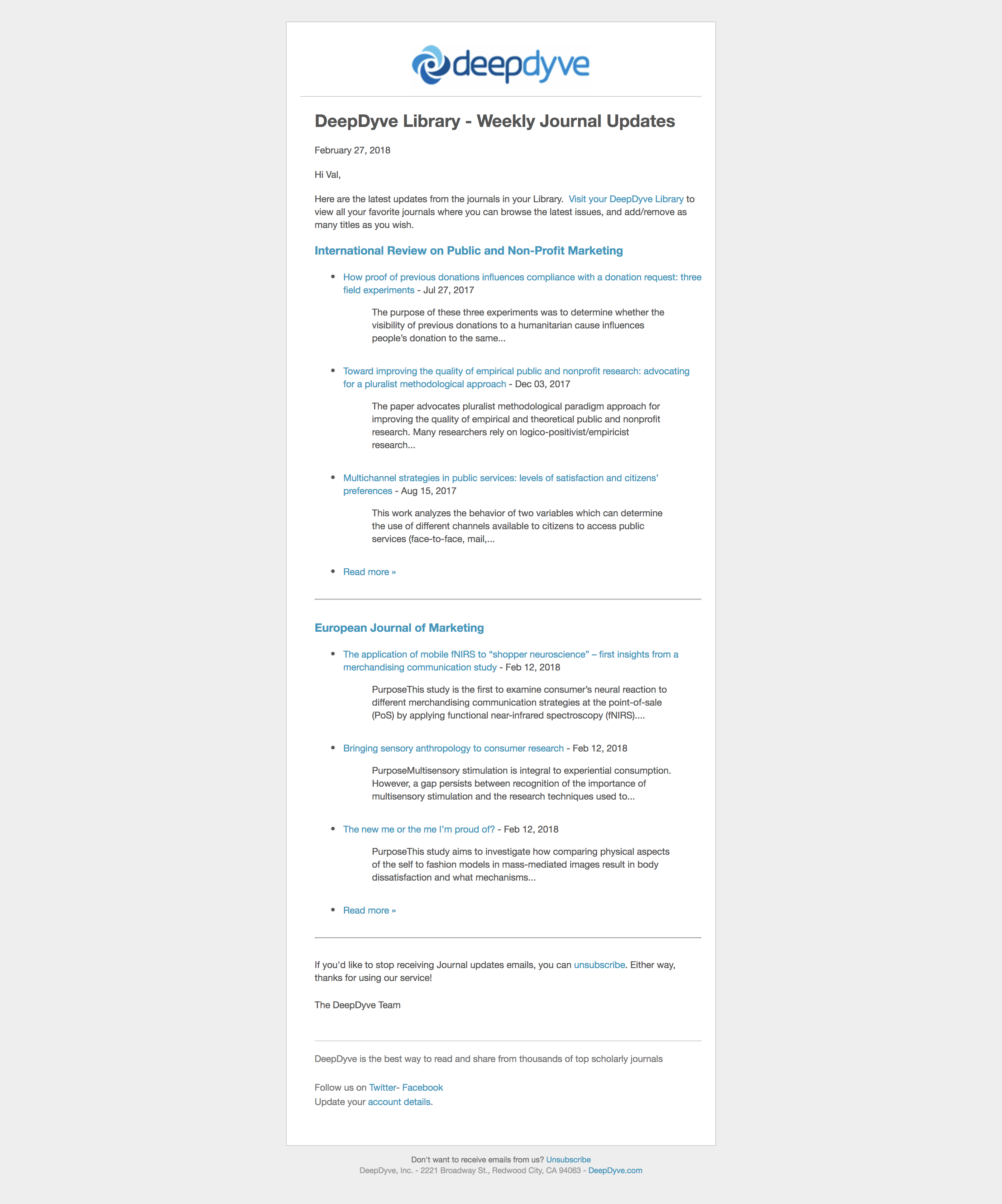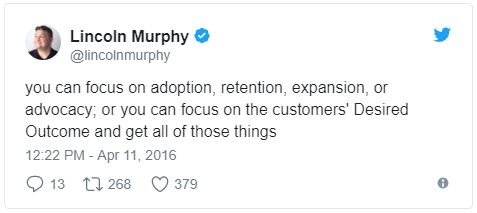This is a tale of too few emails.
One where a beautiful inbox sits and waits patiently for the emails… that never come.
One of a price too high to risk losing customers left and right.
And maybe a cautionary tale for you.
This, my friend, is the story of DeepDyve.
A database scholarly research, DeepDyve gives you instant access to the papers and journals that even Google Scholar might not pull up on a search.
It’s an incredibly useful resource for writers of all kinds:
- journalists
- academics
- authors
- playwrights
…and conversion copywriters.
Which is exactly why Joanna Wiebe has a subscription and highly recommends that savvy copywriters do the same.
And at $49/month, DeepDyve is on the more expensive end of products-it-takes-to-do-your-job-as-a-writer. In fact, next to my brand new MacBook Pro that I’m currently typing on, DeepDyve is the biggest investment I’ve made in the last few months to enhance my copywriting skills.
And yet…
DeepDyve gives me very little reason to:
a) remember to use it (it’s still not something that’s part of my regular research workflow)
or
b) want to stick around
Why?
Because I almost never hear from them:

Ready for… a…. (come on you know it’s coming…) Deep Dive???
LOLZ
The Stats
2 week free trial
2 emails during that time
Two By Two
I have to tell you that I had high hopes for DeepDyve based on my initial email experience.
Day 0 and I get an email with a personalized subject line?! LOVE IT.
And the content inside is great too:

DeepDyve takes an educational approach right up front: get the new user in and actually engaging with the app.
And focusing on getting heavy engagement with their platform upfront makes sense. It actually plays into what Andrew Chen calls “the most tragic curve in tech”:

The above diagram shows the precipitous drop-off between initially attracting a user versus the difficulty of retaining them over the first month. The curve drops off fast- very fast. I’ve seen a lot of real data around this, and believe me, there are very few cases where things look pretty.
To Andrew’s point, a feature that’s not pointed out early might as well not be pointed out at all.
If more than 40% of people drop off at Day 7, you better get those early days right.
DeepDyve jumps in with a few asks on either side of the engagement wall.
The wall is what stands at that point where using the product, engaging with it, drives a deeper connection between the user and the product. It’s where buy-in happens… and (perhaps without meaning to?) DeepDyve delivers on both sides of the wall:
In front of the wall are the low effort asks that create value:
Adding journals to your library
Bookmarking articles
DeepDyve’s high impact/low effort ask is:
Install the DeepDyve Browser Plugin
How do I know this is the split on these asks?
Because I did the low effort ones and skipped installing the plugin. I might be testing emails for onboarding experience purposes but I’m still human and have a deep desire to be as lazy as possible from time to time.
DeepDyve could pare this back just a bit and ask for only those low effort/high value tasks in this initial email.
Onboarding is nuanced and you don’t want to ask too much up front:
Don’t present all of your features up front in a massive wave of modal windows and tooltips. Like in games, few people read the instruction manual before they get started—they want to learn this stuff by playing. Know what core features you want users to be fluent in, present those 1-2 key things up-front, and focus 100% of your energy on hammering them home.
– Jackson Noel, COO Appcues
It’s possible that the most common onboarding mistake is asking your new users to do too much right in the beginning.
To avoid onboarding overwhelm, make every step in the process as small and simple as possible.
And since we already know they’re only sending two emails (ahem) there’s plenty of room to add a dedicated email to that browser plugin.
The rest of this particular email takes a moment to talk about the billing cycle.

A note here: many founders shy away from doing this but it’s a huge request from customers to know more about their billing. Stop being so secretive about it and answer the question before they ask it. It doesn’t increase churn by telling them when they’ll be billed. It increases churn when you breed an underlying distrust between you and your customer.
The social media links could be saved for another email and the entire blog mention can be an email too.
SPREAD IT OUT, DeepDyve.
We’ve got time.
Email #2 (sent 4 days before my trial expired)
The second email I got during my DeepDyve trial was sent about 5 days after I completely forgot I signed up for DeepDyve.
This is what happens when your customers sign up for your app. They get busy. They forget. It’s not part of their current workflow. It’s your job to remind them why they signed up in the first place.
So DeepDyve shows up and asks me a question I wasn’t otherwise considering:
Happy with your DeepDyve experience?
Well, gee, I dunno. But now that you ask, no, not really.
I get what they’re going for here but this subject line (partnered with the lack of communication leading up to it) is bound to get a resounding NO from many new customers.
Might I suggest a few options?
How Bridget gets the most out of her DeepDyve experience
How you can make the most of your DeepDyve experience
Your favorite part of DeepDyve
Your DeepDyve experience, improved
Any of those alternatives paint a picture for the reader that they are using DeepDyve, loving it, and just wanting more. There’s no out here, only further in.
So what’s inside this email?

Look, this is a piece of software built for research driven folks so I’m gonna be picky here…
Where are the links where I can read more???

Those words in bold aren’t links?
You mean I have to type words to get answers instead of reading them for myself first in some helpful documentation somewhere?
This email could be SO GREAT if there were links to learn more on my own (not to mention the mismatch of “we”, “us”, and “I” here that’s giving me a complex)
But wait! There’s more.
There’s a third email.
It’s called:

The DeepDyve Weekly Digest!
…
But I’ve only seen one issue.
K, you can call your product update/newsletter/regular email anything you want as long as you are truthful about what your customers can expect.
A Weekly Digest that’s produced once… a quarter?
I’m no math wizard but that’s not weekly.
And it’s too bad, really, because the content is exactly what I need from a service like this.

DeepDyve takes this opportunity to update me on new articles that have been added to my journals. Sweet! Noting what I’ve taken interest in and delivering me that content is Basic Marketing 101 in this day and age.
I have a theory here. Are you thinking what I’m thinking?
I suspect that DeepDyve has these Weekly Digest emails setup to send whenever there are new additions to the journals I added to my library back on Day 1.
However…
I’m not a polished academic or a power-user of DeepDyve (yet) so I only added a couple of journals.
Those journals don’t get updated as often as others so… I’ve missed some weeks.
Are you tracking with me?
Fortunately, all of this is avoidable with, ironically, customer research.
To get at the heart of the issue where a weekly digest doesn’t end up being weekly is to better understand your customers: why they chose your product and what their desired end result is in using your product.

And this is where customer success and onboarding meld into one.
The seeds of churn are planted early.
When you can clearly identify your customer’s goals for using your product, your email experience can meet them with the steps they need to achieve that goal.
And it goes beyond onboarding into the entire customer journey.
Was that a deep enough dive on a mere two emails? I think so! Let’s wrap this one up:
The Good
- Leading with low effort/high value asks
- clearly stating when the billing cycle will start
- offering a trial extension
The Bad
- not enough ongoing education about how I could be using the product more
- clumsy use of “we”, “us”, and “I” in the same email
The Ugly
- just two emails in the entire trial period
- a not-so-weekly weekly digest
- did I mention it’s a $49/mo product with almost no proper onboarding?
DeepDyve has an incredibly valuable product with a lack of connection.
Are they missing customer insights? A better understanding of end goals?
Or are they simply falling victim to the same thing too many software companies get caught up in:
User onboarding in on the “someday maybe” list.
DeepDyve: “someday” is right now and that “maybe” needs to transform into a resounding yes!
Your Turn
What are your biggest takeaways from DeepDyve’s onboarding emails?
How will you apply those lessons to your business?
Have a set of emails you want to see dissected here? Send me a note at heygirl(at)valgeisler(dot)com with the details of where I can sign up! If I write up the review, I’ll share a draft with you before anyone else sees it.
Want more on email marketing?
Get the Open Rates Newsletter:
See weekly dissections of real campaigns showing up in inboxes everywhere.
Just enter your email below to get emails about emails. Meta.

